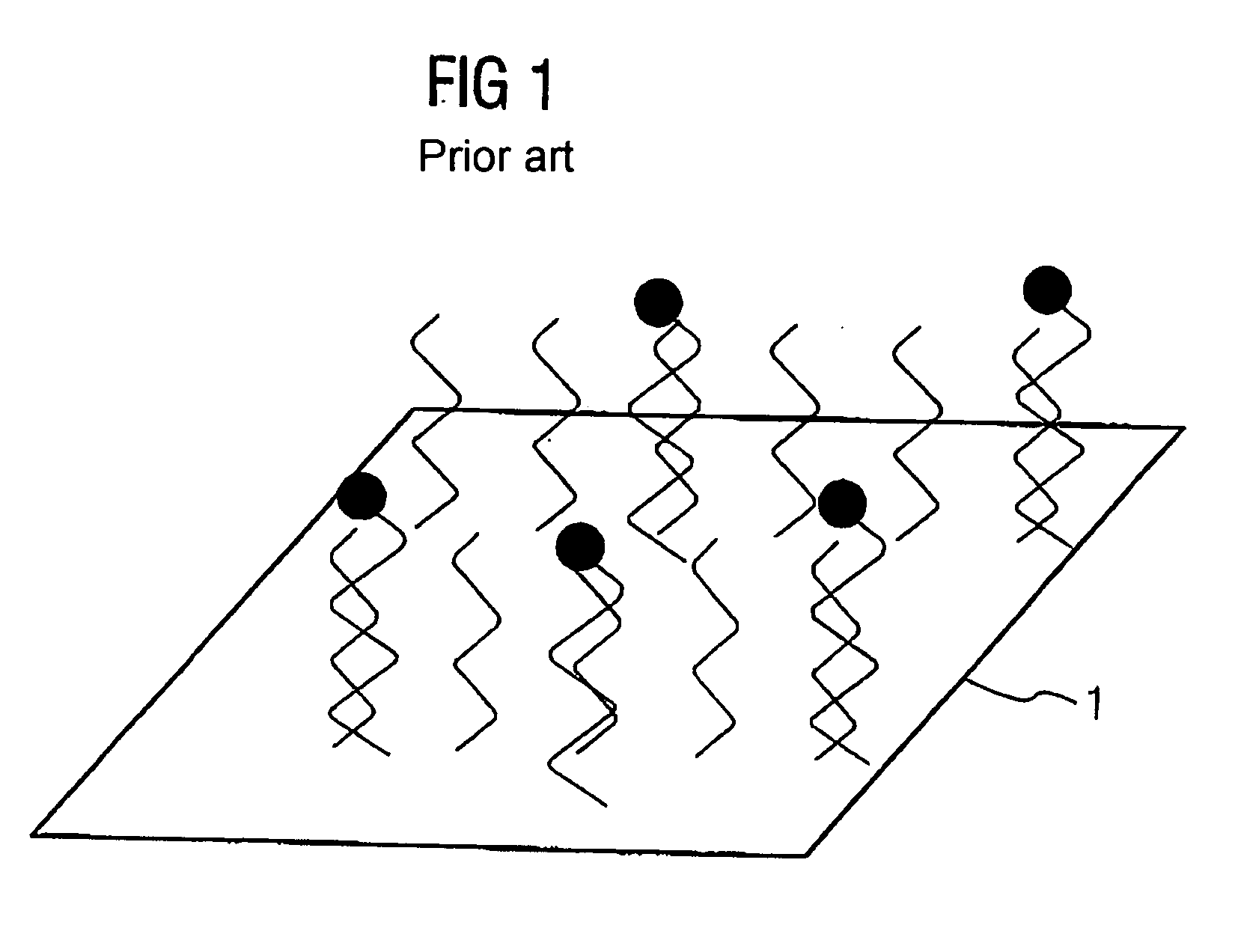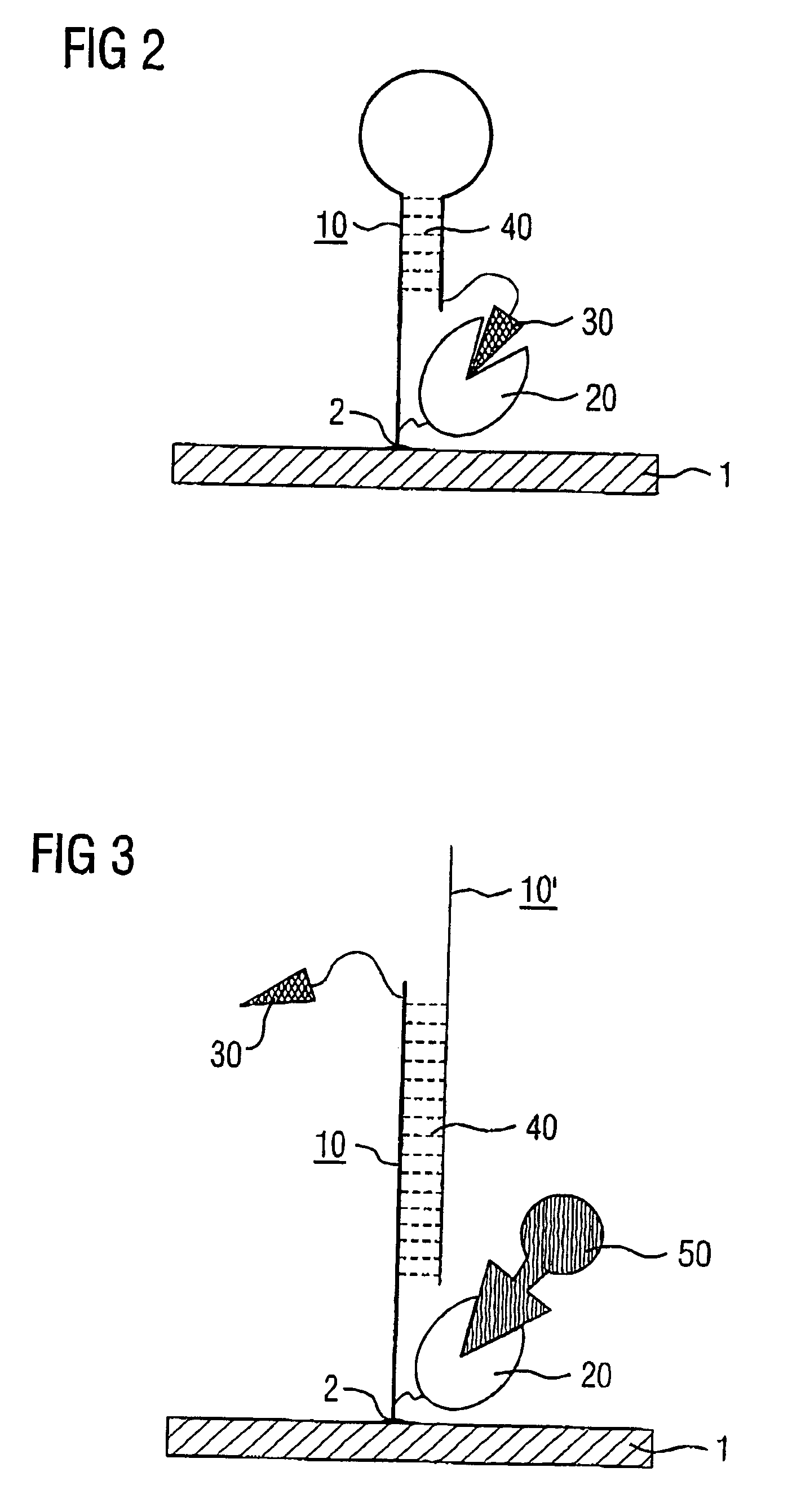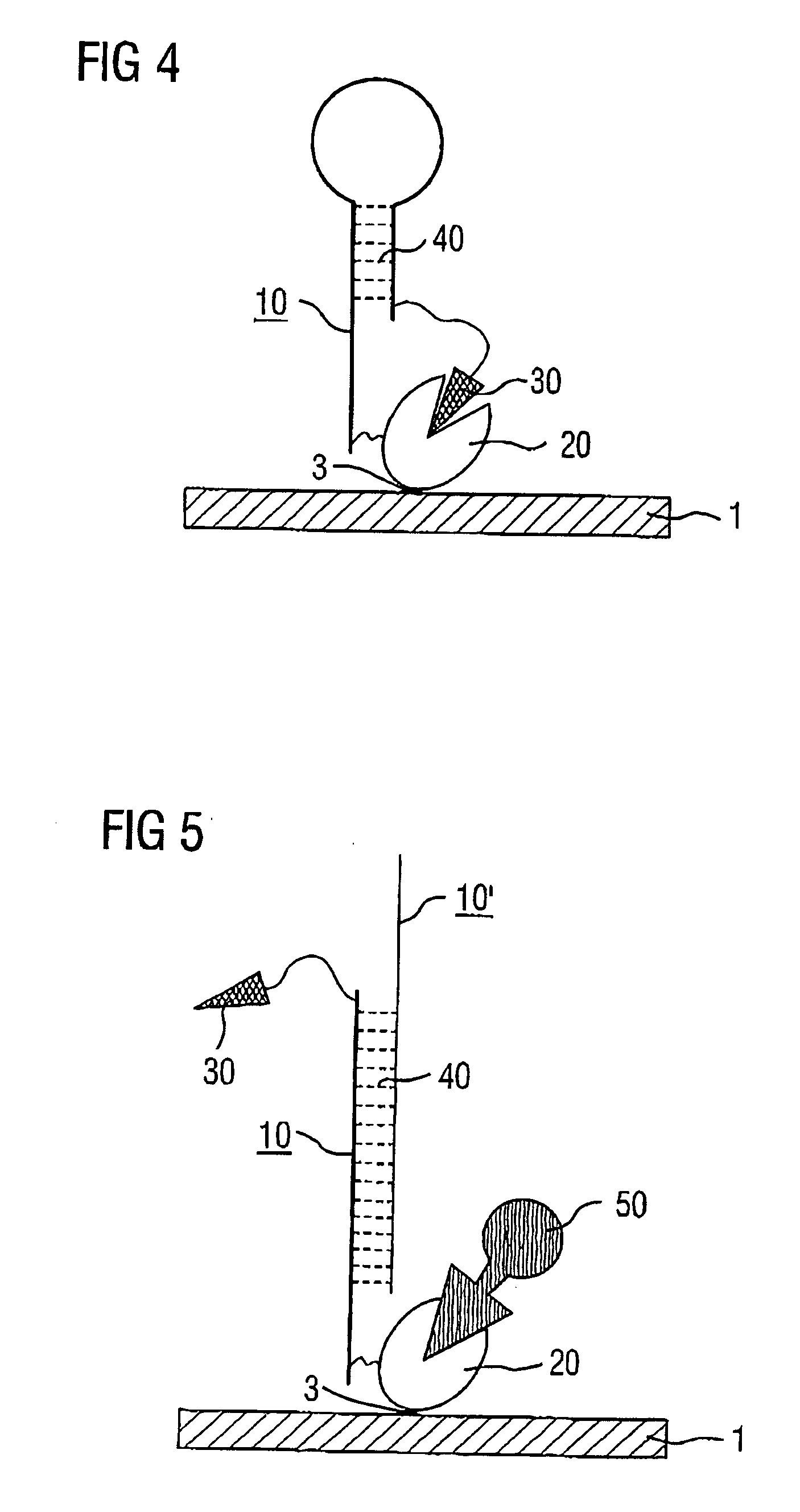Method for biochemical analysis of dna and arrangement associated therewith
a biochemical analysis and dna technology, applied in the field of biochemical analysis dna, can solve the problem of no longer being able to inhibit the biocatalytically active label
- Summary
- Abstract
- Description
- Claims
- Application Information
AI Technical Summary
Benefits of technology
Problems solved by technology
Method used
Image
Examples
Embodiment Construction
[0037] Reference has already been made to FIG. 1 in the introduction while discussing the prior art. In the case of a DNA chip which operates in accordance with the optical principle, the circles represent fluorescent reporter groups which are coupled to the analyte DNA / signal DNA. The information of interest is obtained by optical interrogation.
[0038] The subsequent description of the figures relates initially to FIGS. 2 to 9. The same phenomenological principles apply to all these figures.
[0039] A support 1 is in each case present as substrate in FIGS. 2 to 9. If an electrochemical read-out method, in particular redox cycling, is used, the support 1 is a chip having integrated circuits which are not shown here in detail. These circuits can be analog or digital in design.
[0040] FIGS. 2 / 3, 4 / 5, 6 / 7 and 8 / 9 in each case show control of the biocatalytic activity by means of DNA hybridization, with this consequently effecting a switch. DNA 10 or 10′, with 10 being what is termed a c...
PUM
| Property | Measurement | Unit |
|---|---|---|
| distance | aaaaa | aaaaa |
| width | aaaaa | aaaaa |
| grid size | aaaaa | aaaaa |
Abstract
Description
Claims
Application Information
 Login to View More
Login to View More - R&D
- Intellectual Property
- Life Sciences
- Materials
- Tech Scout
- Unparalleled Data Quality
- Higher Quality Content
- 60% Fewer Hallucinations
Browse by: Latest US Patents, China's latest patents, Technical Efficacy Thesaurus, Application Domain, Technology Topic, Popular Technical Reports.
© 2025 PatSnap. All rights reserved.Legal|Privacy policy|Modern Slavery Act Transparency Statement|Sitemap|About US| Contact US: help@patsnap.com



